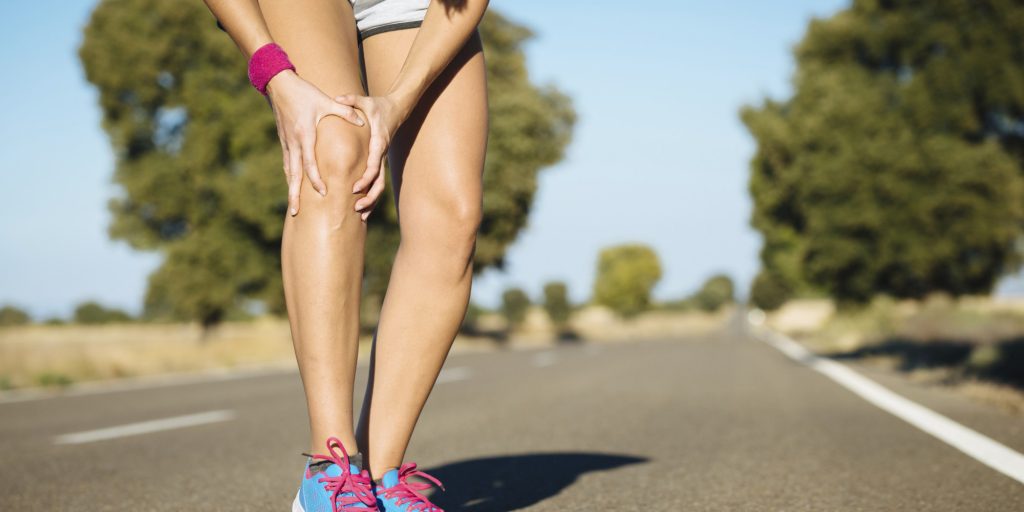If your runner’s knee isn’t getting better, then perhaps your knee isn’t not the issue. In this post we look at what else might be going on.

Your knee is essentially a hinge with your knee cap (patella) being an ingenious device to improve the leverage of your quadriceps to extend your knee.
Apart from the four ligaments and the two menisci that give the joint it’s stability, there is very little that can go wrong. Problems may arise when the two large bones that form the hinge, namely the tibia and the femur, have limited range of motion.
If you’ve been diagnosed with Runner’s Knee or Patellofemoral Pain Syndrome (PFPS) I’m sure you’ll have been told to foam roller your IT band and work on your VMO (inner quad muscle), to improve the tracking of your patella.
Think about this though, if your patella is a train and your femur is the track, in the case of a derailment do you take a look at the train or the track?
I’m not a rail engineer but I think you’d look at the track first. The track in this case is the femur and that’s controlled by the muscles of your hip.
It’s possible therefore that your knee problem isn’t just a knee problem after all, but perhaps more related to your hip.
Start by checking pronation
Whilst it’s obviously difficult to give specific advice as every case is different, it’s very common to find that knee issues arise when range of motion becomes limited during what is known as pronation.
Pronation describes a series of joint motions that occur as your body seeks to absorb force. It’s therefore particularly common to see limits in these motions with people who either run or jump frequently.
Although pronation is often described in a negative way, particularly amongst the people who are selling you running shoes or orthotics designed to prevent it, it’s an essential part of human movement.
If you can’t pronate adequately, then your suspension system is compromised and so is your ability to absorb force.
How to check pronation
Assessing your hip motion will give you a pretty good idea of how well you’re pronating on either side of your body.
Lay down on the floor with your feet hip width apart. Lock out your knee by squeezing your quadriceps and slowly rotate your leg inwards (internal hip rotation). See how far you went before trying the same on your other leg.
Watch for any movement at your pelvis or your knee bending, both of which are common compensations when the motion is limited.
What did you find?
Do you have less motion at your hip on one side?
Is this the same side as your troublesome knee?
If it is a lack of pronation may be contributing to your situation.
For information on how to improve your ability to pronate, take a read of this article which includes exercises you can use to make immediate changes.
If you’d like to know which gym exercises will improve your runner’s knee and learn exactly how to do them, take a read of this new post.